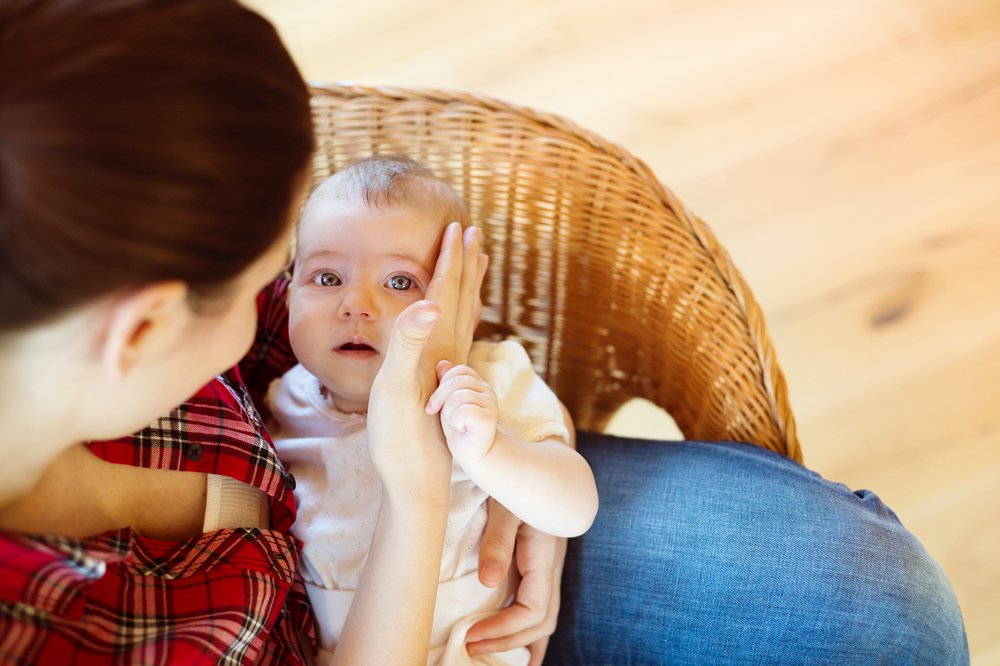Key points:
1. After a Fall: Stay calm when your baby falls. Look for warning signs: swelling, bleeding, unconsciousness, vomiting, imbalance, crying, pupil differences.
2. Action Steps: Undress baby to check for injuries, assess head injuries, observe behavior. If concerned, call 911 or a doctor. Prevent falls with precautions like cushioning, securing rugs, using safety gates, and supervising closely.
No matter how careful you are, a fall might happen one day. You look away for a split second, and your baby can roll off the couch, bed, or changing table onto the floor. It’s easy to feel like the worst parent ever. However, you are not alone, each year in the United States alone, 2.8 million children head to the emergency room for injuries related to a fall.
So if your baby falls, remain calm. Most of the falls are not serious, but you should learn about warning signs and what to do when it happens.
What symptoms should I look out for?
- Swelling
- Significant bleeding
- Loss of consciousness and/or rolling eyes
- Dizziness/sleepiness
- Vomiting
- Loss of balance
- Prolonged crying (for over one hour)
- Crying when touched
- One pupil being larger than the other
- Your baby is unusually weak and/or unresponsive
- Cannot be awakened or is extremely difficult to wake him up
What should I do if my baby falls?
- Don’t rush to contact your doctor or call 9-1-1 just yet.
- Remain calm and console your baby. This will help your little one cool down and help you evaluate the condition.
- Note of caution: If you think there’s any chance of a neck injury (i.e. if you saw your baby’s neck twist, or know that he landed directly on his head), don’t move him — this can cause serious complications. Instead, call 911 and try to soothe him in place.
- Undress your baby to check his limbs, head and body for any bumps, bruises, redness, swelling, or deformity. If you don’t see any swelling or large bumps on the head or body, there is probably no significant injury.
- If you see any obvious swelling or deformity in any body part or your child is limping for more than a few hours, you should go to the ER or your doctor’s office.
- Check for a head injury.
- Note of caution: Pay close attention to how your baby behaves beyond the immediate aftermath of the fall. If there are no obvious signs of injury, and he’s acting fine, then there’s probably not a lot you need to do. However, if your baby seems unusually subdued, dazed, sleepy, or if he begins vomiting, get help right away.
- When in doubt, call 911.
- If the fall seemed really, really hard, or if you notice any of the major signs of trauma discussed above call 911, or take your baby to a pediatric urgent care center immediately.
- If the injury doesn’t seem particularly serious but you still have concerns, call your pediatrician (instead of 911) and he or she will be able to tell you whether you need to get your child checked.
It is important to note that the first element of prevention is for parents to realize that children are usually one step ahead of them in terms of where parents think they are at developmentally. Which means that you may not think that your little one is capable of rolling over -until it happens! You may be changing his diaper and out of nowhere he rolls and falls onto the floor. Which is why it’s critical for parents to think ahead and prevent injuries.
Here are some tips to help you avoid falls or serious injuries:
- Cushion sharp corners and furniture.
- Put slide-proof pads under all rugs or remove throw rugs until they no longer trip up your child.
- Keep your child away from elevated porches and decks, and place gates at the top and bottom of each staircase.
- Move chairs and other furniture away from windows.
- Be extra vigilant about holding your baby or toddler on the changing table. Don’t leave your child unattended.
- Lower your child’s mattress as soon as he starts standing up in his crib.
- When you’re at the grocery store, buckle your child into the shopping cart.
- Use window guards on windows. Don’t rely on screens.








